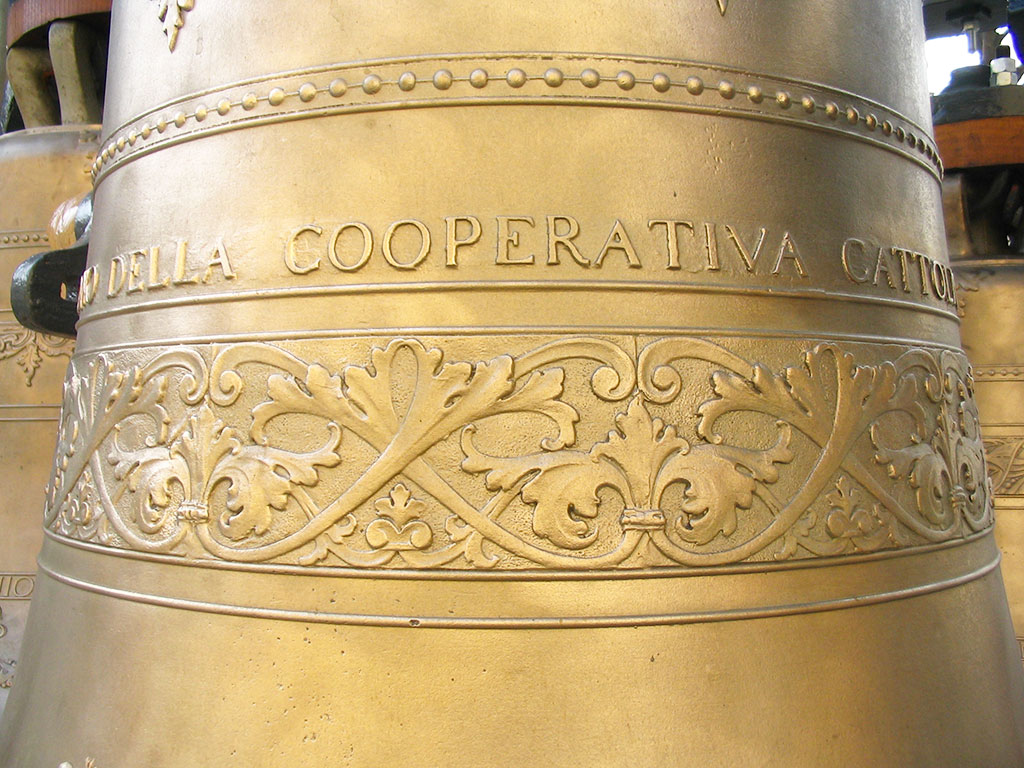Shape, Dimensions, Inscriptions
Contrarily to what is commonly thought, the shapes of bells can be very different depending on their period, their materials and the purpose for which they were constructed. The walls can be concave or convex, hemispheric, barrel or tulip shaped. In section, they can round, square, rectangular, elliptical or polygonal. Chinese bells often have the profile of the mouth formed in such a way as to reproduce the stylized shape of the lotus flower.
The size of the bells
In Europe, pre-Christian bells were all of small dimensions (“tintinnabula aurea”) and even the first Christian bells, made in monasteries, were rather small, made from slabs of wrought iron, squared and turned, similar to cow bells.
Bronze bells only began to be produced around the 8th century: in fact, although casting techniques were known during the pre-Christian era, they were lost during the period of the Barbarian invasions. Bronze casting allowed the construction of larger bells with thicker walls (in the 9th century, they reached 4 quintals (882 pounds) and maintaining greater control over the shape of the bell, which began to be predominantly round.
In the 11th century, the extremely tall gothic towers forced the foundries to cast larger, more powerful bells and the result was the classic tulip shape, narrow and rounded at the top and with a long belly that widened at the bottom. By the 13th century, this became the most widespread shape, but it changed slightly around 1400, becoming shorter and more concave, with a wider upper part (called the “sky”).

Inscriptions on the bells
As for the custom of decorating bells with inscriptions or decorative motifs, it can be said that there was an illustrious precedent in the bells of the Chou dynasty (1122-221 BC) which wee adorned with symbolic motifs attached to the surface of the instrument using the lost wax technique.
Some bells dating from the beginning of the Seventeenth century (such as those of Villalago and San Gallo in Switzerland) bear an Arabic numeral date in the bronze, but with the passage of time, decorations and inscriptions became more and more refined.
The mysterious inscription
There is a rather curious inscription that came to light on a bell cast in 1408 that reads:
SATOR AREPO
TENET
OPERA
ROTAS
(The Creator, powerful in all places, supports his works and the celestial spheres)
The uniqueness of this inscription is that it is a palindrome, which is to say, a phrase that reads the same forwards and backwards.
